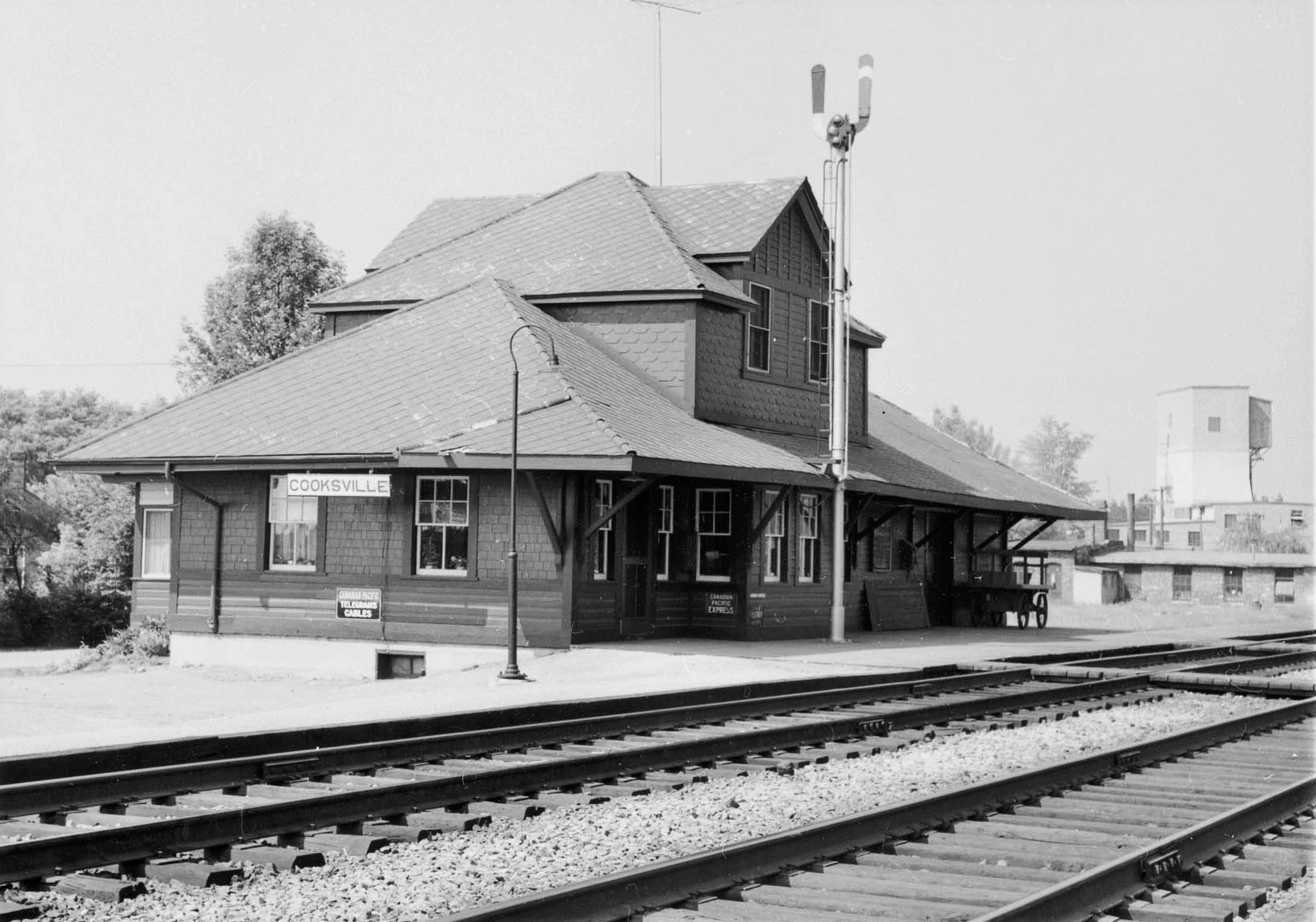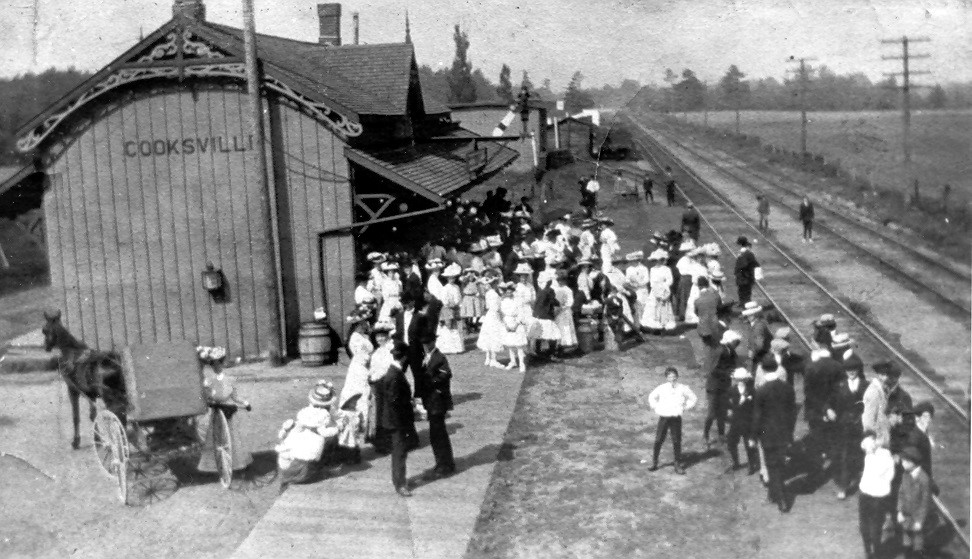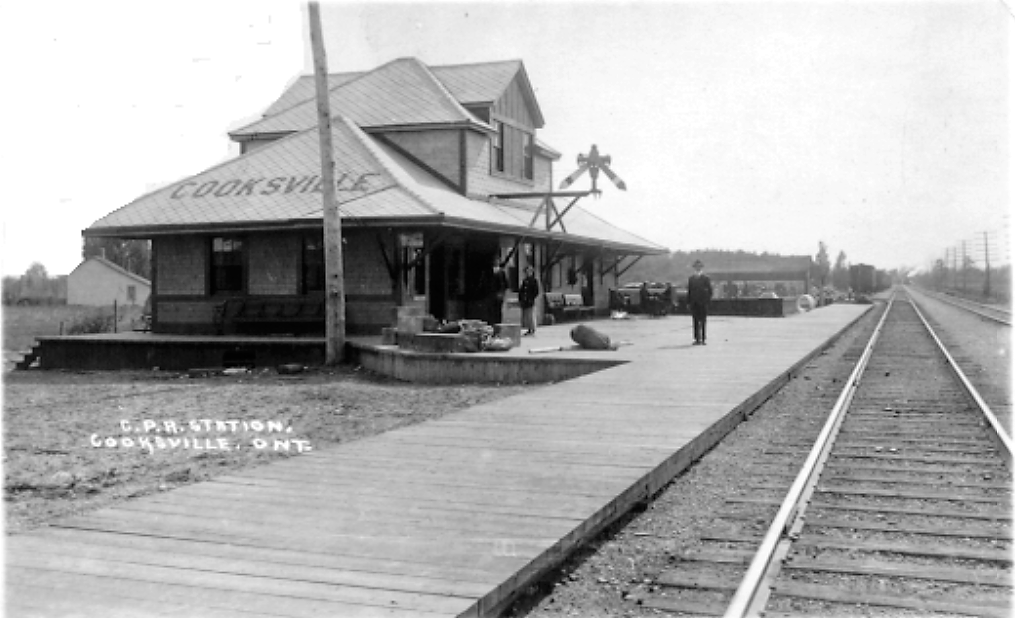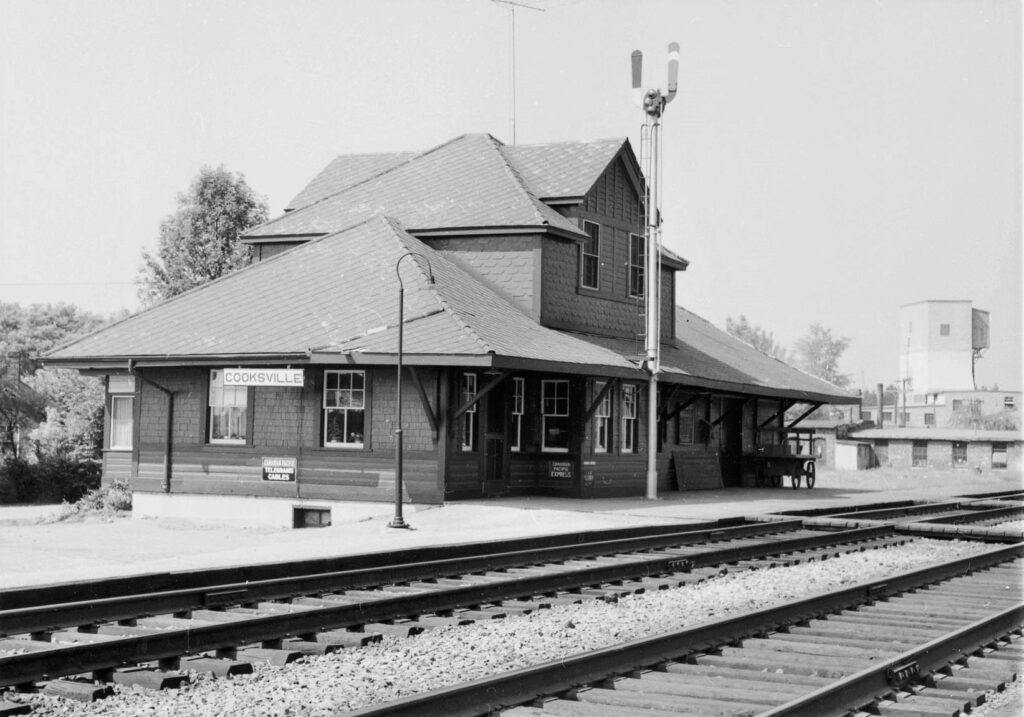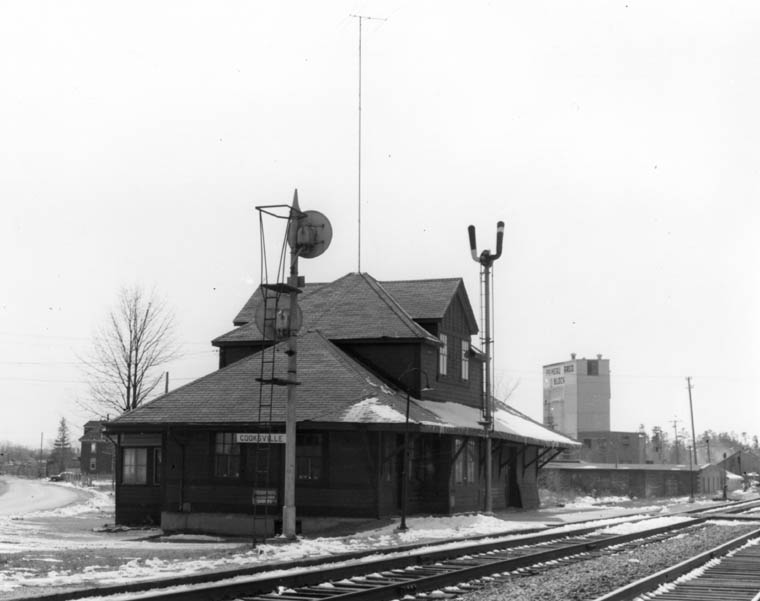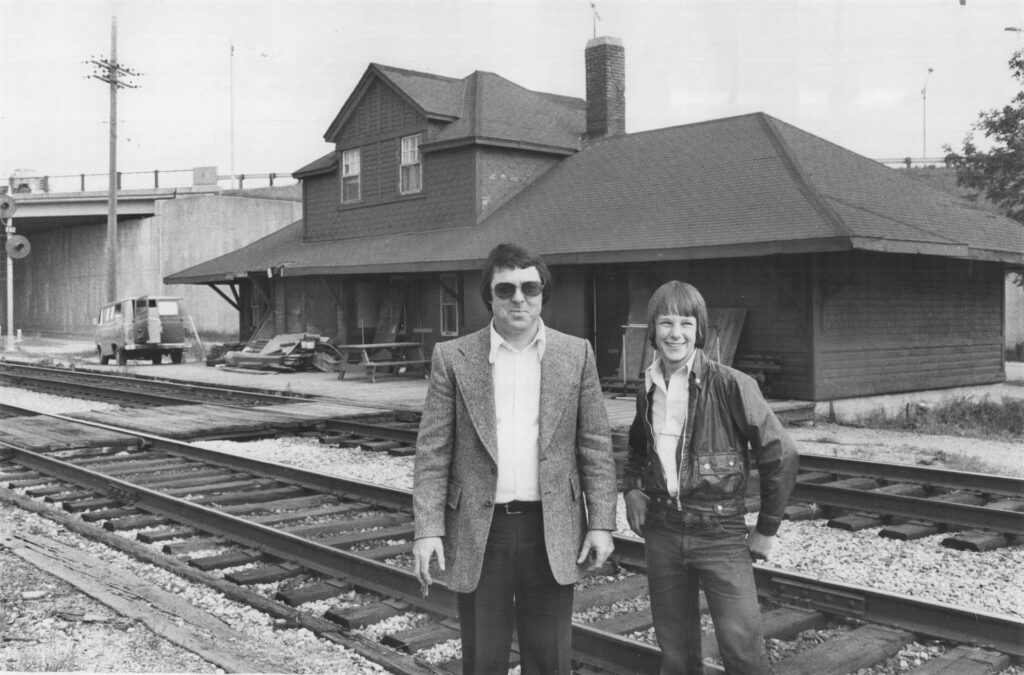Summary
The first train station in Cooksville was built by the Credit Valley Railway in 1877 while construction was progressing northwest from Toronto. While there are no known photographs of this station, it was likely a simple wooden structure resembling other stations built elsewhere by the Credit Valley Railway. The railway grew in importance when it was extended to St. Thomas in 1881, offering connections to the United States via the Canada Southern Railway. Unfortunately, the original station succumbed to fire during the early 1880’s, and a replacement was built by the Credit Valley Railway around 1883. The new station closely resembled others built by the Credit Valley during its later years of operations. It was a rectangular board-and-batten structure with a pitched roof and ornate carved wood beneath it at both ends. A gable protruded from the roof in the center of the building facing the tracks, and below it a canopy ran along the wall to provide shelter for passengers on the platform. Later the same year the Canadian Pacific Railway gained control of the Credit Valley through one of its proxies, the Ontario & Quebec Railway. By 1884, a total of six trains stopped at Cooksville on a daily basis.
Canadian Pacific announced several planned improvements to Cooksville and the entire line it was situated on around the turn of the 20th century to deal with increased rail traffic volumes. The line was double tracked through Cooksville in late 1912, during which Canadian Pacific had simultaneously replaced the station at Cooksville with a new one. The replacement was a larger structure with a second floor containing the station agent’s living quarters. The lower floor held the waiting room, baggage room, and the station agent’s office. Train frequency increased greatly into the early 20th century, reaching a staggering 20 trains stopping at Cooksville per day by 1921.
Simultaneously, the popularization of automobiles began to negatively impact passenger ridership. This phenomena was intensified by the completion of a four-lane divided highway in 1939, now known as the Queen Elizabeth Way between Toronto and Hamilton approximately 1.8 kilometers south of Cooksville Station. Similar effects were felt after the completion of Highway 401 and Highway 403 north of Cooksville between 1959 and 1963. Service to Cooksville would drop to 15 trains per day by 1961, and it would end altogether within the next couple of years. The station remained in use as a train order office until it was closed entirely in 1973. After sitting abandoned for some time, local efforts to preserve the station grew but failed to organize to a significant degree. The station was torn down in October 1975 and the property has since been turned into industrial space.
After its formation in 1967, GO Transit made attempts to provide commuter service to the Cooksville area but these were met with resistance from Canadian Pacific who continued to use the rail line for freight traffic. After a derailment incident involving hazardous material known as the Mississauga Miracle occurred 3.7 kilometers to the west of the former Cooksville Station site in 1979, Canadian Pacific was forced to allow GO Transit to operate through the area in exchange for not being sued by the City of Mississauga. The Cooksville GO Station was built approximately two kilometers west of the original station site in 1981, bringing passenger rail back to Cooksville for the first time in nearly 20 years.
Condensed Station Info:
| Location: | Served By: | Current State: | Date Built: | Date Demolished/Burned: |
| Dundas Street East | Credit Valley (1877 – 1883) Canadian Pacific (1883 – 1962) | Demolished | 1877 (First) 1883 (Second) 1914 (Third) | 1883 (First) 1912 (Second) 1975 (Third) |


